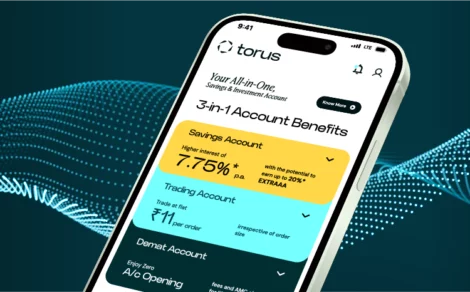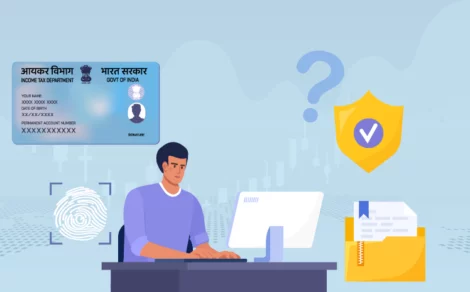A Demat account is necessary for holding and trading securities in an electronic format. However, most investors face difficulties in finding their Demat account number when required. This 16-digit alpha-numeric number, which is provided by your depository participant (DP), is vital for stock market transactions, IPO applications, and portfolio management. As a new investor or a seasoned trader, it is essential to know how to find this number for trading.
Continue reading to learn easy and effective methods to get your Demat account number without hassle!
Understanding the Demat Account Number
A Demat account number is a distinct number given to investors to keep securities in a digital form. In addition, it is used to track holdings, make transactions, and operate in the securities market. Its format differs for the depository:
- Central Depository Services Limited (CDSL): This number has 16 digits without any alphanumeric characteristics.
- National Securities Depository Limited (NSDL): The account number is ‘IN’ followed by a 14-digit numerical number.
Finding Your Demat Account Number
Knowing how to find Demat account number is crucial to handling your investments. You can get this number from any one of the following options:
- Mail or Letter: When you open a Demat account, your Depository Participant (DP) sends you a mail or letter with your 16-digit Demat account number, which is unique to you.
- Online Access: Log in to your DP’s website or mobile app. Go to the ‘Account Details’ or ‘Profile’ option to see your Demat account number.
- Account Statements: This number usually appears in your regular account statements dispatched by your DP.
- Customer Support: If you are unable to find your account number using the above steps, seek help from your DP’s customer support.
Demat Account Number Structure: DP ID and Client ID Explained
Understanding the structure of a Demat account number is essential for accurate transaction processing and effective portfolio management. It is divided into two segments:
- Depository Participant Identification (DP ID): The first eight digits are the DP ID, which refers to the brokerage or bank handling the account. For instance, in a Demat account number like ‘IN30021412345678,’ ‘IN300214’ is the DP ID.
- Client ID: The next eight digits are exclusive to the investor’s account. Continuing the previous example, ‘12345678’ is the Client ID.
Recovery of a Forgotten Demat Account Number
Recovery of a forgotten Demat account number is important to handle your investments effectively. These steps will help you answer how to know your Demat account number:
- Get in Touch with your Depository Participant (DP): Call your DP’s customer support and provide the necessary information, such as your PAN, registered email ID and mobile number. Once they verify your identity, they can recover your account number.
- Check Your Initial Documents: Check the welcome kit documents issued by your DP. These documents usually have your 16-digit Demat account number.
- Access Online Platforms: Access your DP’s online platform or mobile app using your login credentials. In addition, you can go to the ‘Account Details’ or ‘Profile’ section to locate your Demat account number.
- Check Statements: Your account number is mentioned in the initial statements mailed to you by the DP. So, you can check these statements to get the number.
- Use Central Depository Services: If your Demat account is with NSDL or CDSL, go to their official websites. You can view your account details, including the Demat account number, by submitting your PAN and other necessary information.
- Refer to Your Trading Platform: If you have an online trading platform associated with your Demat account, log in and refer to the ‘Account Information’ or ‘Profile’ area where your Demat account number may be shown.
Difference Between Demat Account Number and Trading Account Number
The difference between a trading account number and a Demat account number is given below:
| Feature | Trading Account Number | Demat Account Number |
| Purpose | Used to buy and sell securities in the stock market. | Used to hold securities in electronic form. |
| Functionality | Facilitates transactions like buying and selling stocks. | Stores shares, bonds, ETFs, and mutual funds. |
| Format | A unique identification number assigned by a stockbroker. | A 16-digit number (e.g., CDSL: all numeric, NSDL: starts with ‘IN’ followed by 14 digits). |
| Issued By | Stockbrokers registered with SEBI. | Depository Participants (DP) under CDSL or NSDL. |
| Linkage | Linked to a Demat account for settlement of securities. | Linked to a trading account for seamless transactions. |
| Usage | Required to place orders in the stock market. | Used for holding shares after purchase and before selling. |
| Example Scenario | When you place an order to buy or sell stocks, it is processed through the trading account | When you buy shares, they are stored in your Demat account. |
Final Thoughts
Overall, knowing your Demat account number is crucial for seamless trading and investment management. It plays a vital role in holding securities, while the trading account facilitates transactions. Moreover, understanding the difference between these accounts helps prevent errors and ensures smooth operations in the stock market. If you ever forget your Demat account number, there are multiple ways to recover it.
Open a FREE Demat account with Torus Digital and stay informed, stay invested, and manage your financial future efficiently!








